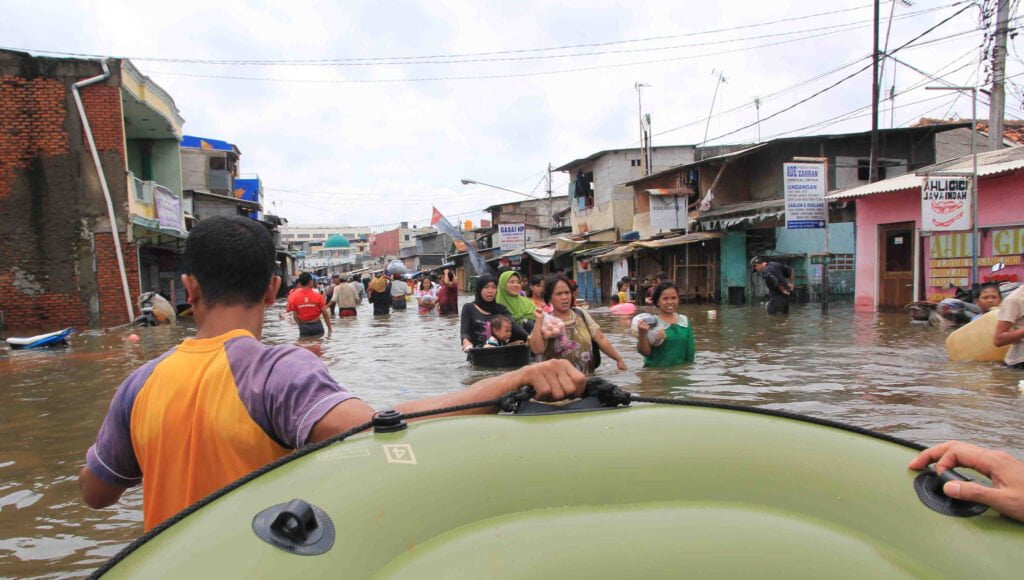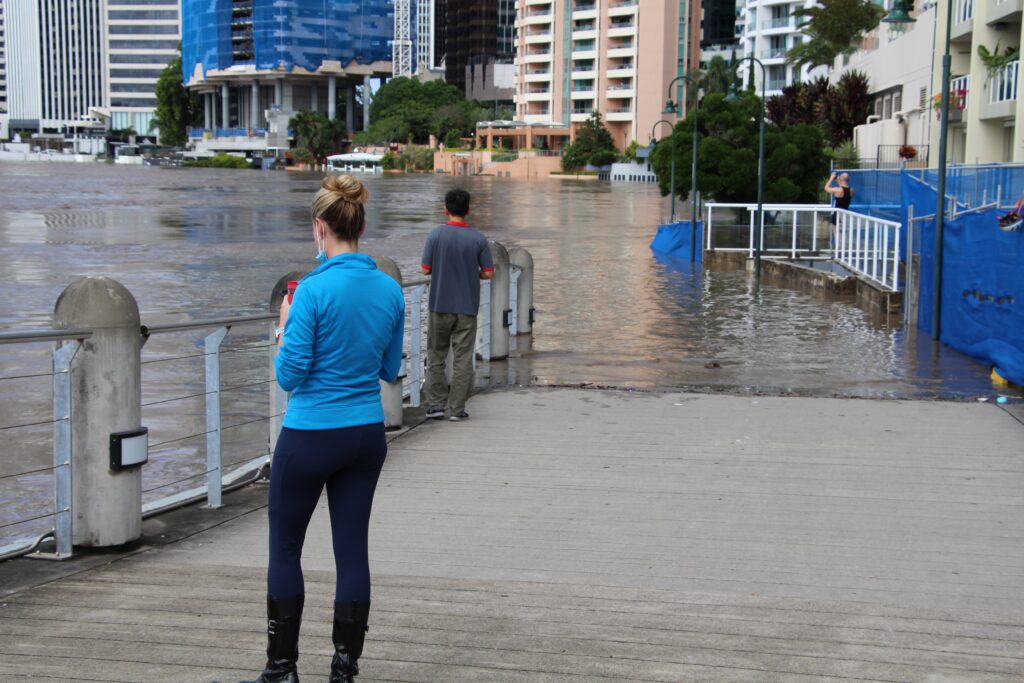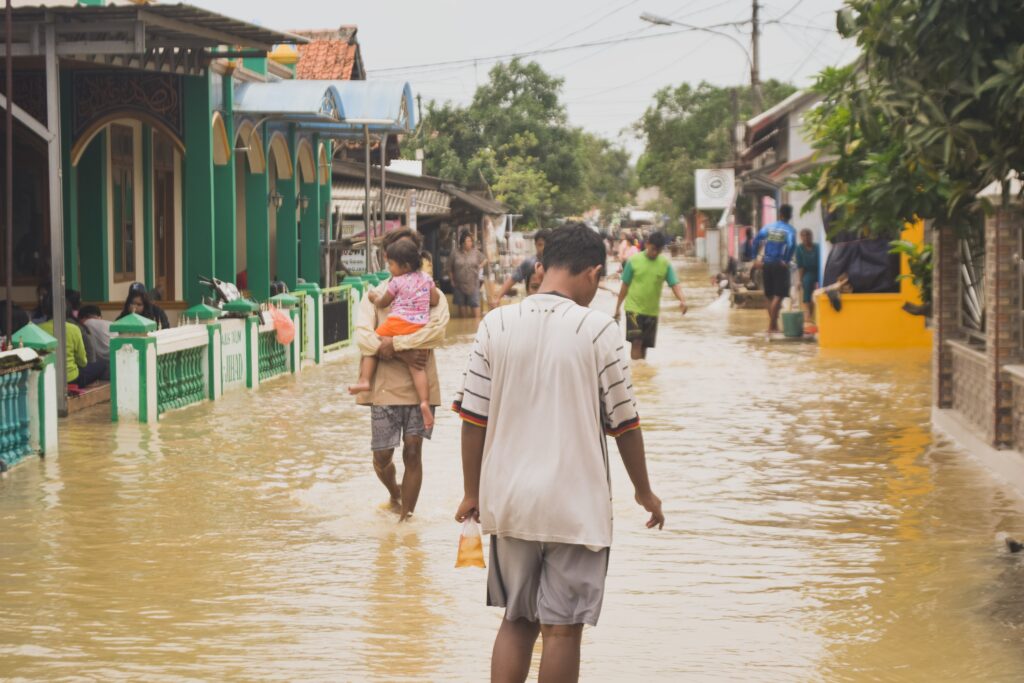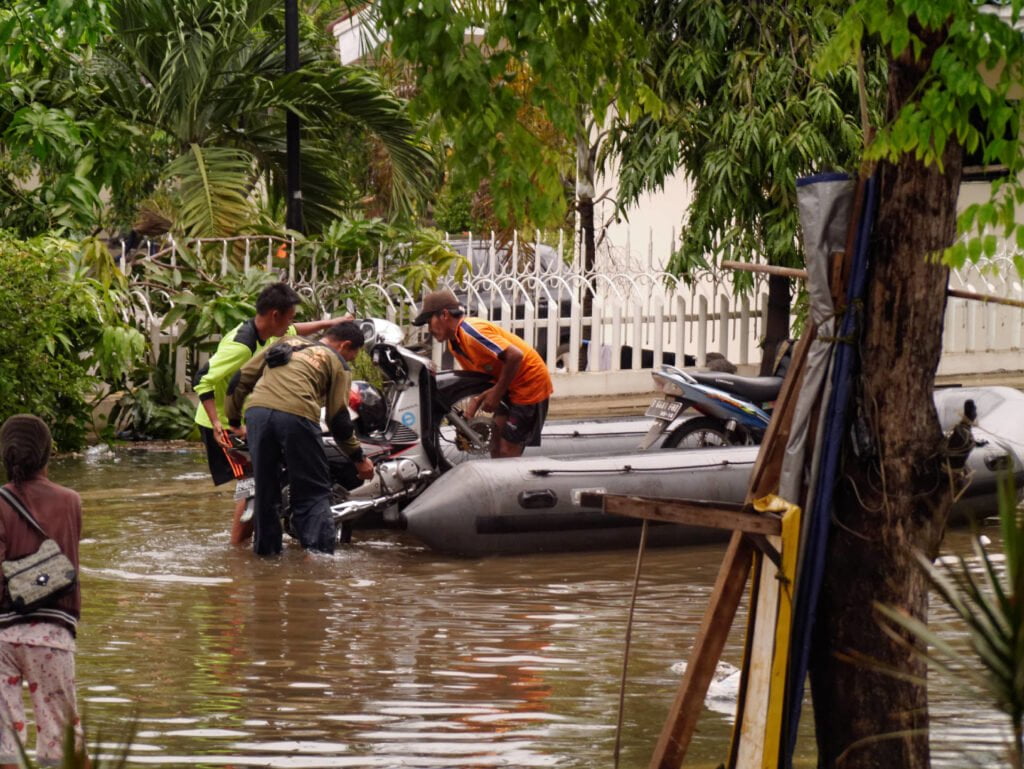Floods hit every continent in 2022: what can be done to limit the damage?
Communities are being pushed into a reckoning onset by climate change — adapt their way of living to mitigate flood damage or face a cycle of destruction.
 Intense rainfall is affecting nations the world over, but flood preparation can help prevent further damage. : Kelly Sikkema, Unsplash Unsplash license
Intense rainfall is affecting nations the world over, but flood preparation can help prevent further damage. : Kelly Sikkema, Unsplash Unsplash license
Communities are being pushed into a reckoning onset by climate change — adapt their way of living to mitigate flood damage or face a cycle of destruction.
As shell shocked Congolese sift through rubble, looking for bodies and belongings in flood-ravaged Kinshasa, it feels like an eerie repeat of the deadly floods that brought Pakistan to its knees just months ago.
The DRC is not alone in this struggle. Nigeria, Niger, Chad, Cameroon and surrounding African states have suffered deadly floods in 2022, with a report from World Weather Attribution finding that climate change made the torrential rains and floods 80 times more likely.
Other continents are grappling with flood emergencies, too: parts of Australia are receiving summertime flood warnings, shortly after a spate of destructive rainfall in New South Wales and Victoria.
The United States is still reeling from a “summer of floods” which saw at least four flooding events cascade across an 11-day span from late July to early August.
While the fight against climate change rages on, periods of intensified rainfall is something all corners of the globe seem stuck contending with. Researchers have continued to develop and refine all facets of flood-related responses, devising a comprehensive suite of investments that governments can make to safeguard their nation.
From preventative measures limiting a flood’s impact to educational responses to smarter rebuilding, states have options to limit the damage.
Investing in flood warning systems
Flood warning systems are tools that can provide regions advance notice of an impending weather event. At its most effective, a flood warning system can advise users of an expected rise in river levels and the damage that might come without action. When it works effectively, a flood warning system gives communities the inside track to prepare themselves.
Linda Speight, hydrometeorologist at the University of Oxford, says flood warning systems are a “great tool to prevent disaster”.
“Flood warning systems are a cost-efficient way to prevent floods from destroying lives and livelihoods.”
“While warnings don’t prevent flooding, they give advance notice of an impending flood to allow communities to prepare: bringing in extra emergency personnel, establishing temporary flood defences, securing clean drinking water, moving valuables or — for the most extreme events — evacuating.”
The United Nations has tasked all countries with implementing early warning systems by 2027, a goal that half the world is yet to meet.
Teaching communities how to be disaster-ready
Floods become exponentially more costly and destructive when they strike on a floodplain that houses many people. Some states have turned to voluntary property acquisitions — buying housing on at-risk floodplains, driving down the population directly exposed when heavy rain falls. But where that’s not feasible, disaster mitigation initiatives can save lives, says Wahyu Wilopo, lecturer at Universitas Gadjah Mada.
Wilopo suggests a two-fold approach to mitigation: adapting infrastructure and educating residents on best practice. The construction of reservoirs to trap run-off, for instance, is a structural change that could help slow the speed of water flow.
“Another structural solution to reduce flooding is building infiltration wells around new buildings to reduce surface runoff and increase groundwater recharge – this would require legislative changes to building permits.”
But construction changes only go so far, and Wilopo points out that communities need to also be taught how to respond when flood events occur.
“Disaster education is crucial to achieving community resilience in facing disasters, and should be introduced from an early age both in the family and school environment in order to turn knowledge into culture – a process that requires a long time and continuous effort.”
Spend big on disaster-proof public infrastructure
The devastation wrought by floods are indicative of longer-term big picture planning challenges in the view of experts Sotiris Vardoulakis of Australian National University, and Ross Bailie and Veronica Matthews of the University of Sydney.
They explain: “The converging hazards of climate change (and disasters that result), rising obesity, and the COVID-19 pandemic are ripping open the cracks that are exposed by socio-economic inequalities, an ageing population, and unchecked urban sprawl.”
“To rein in this trend, the government will have to ramp up their focus in many areas: planning land use through the lens of climate and flood resilience, lifting housing conditions, providing high-value health care, strengthening public health surveillance and emergency warning systems, and fostering a circular economy that will enable the transition towards net zero.”
The New South Wales state government in Australia has unveiled an AUD$800 million (USD$534.9 million) resilience fund for the Northern Rivers region, where more than 6,000 homes were damaged or destroyed by floods in 2022.
Make use of nature-based solutions
Some regions are better placed than others to adapt their environments for flood risk. Areas that have capacity to install or expand parkland, urban forestry or green roofs can better fortify themselves against the damage of heavy rainfalls as a complement to “grey infrastructure”, hard structures like drainage channels and floodways.
Dwita Sutjiningsih, professor of civil engineering at Universitas Indonesia, says sole reliance on grey infrastructure “cannot solve a problem as multi-dimensional as flood disasters”.
“Nature-based solutions utilise water elements, such as retention/detention basins and wetlands, and green elements, like parks, urban forest and green roofs, to build strong environmental resilience against extreme weather.”
“The solutions are, it seems, out there — it is now just a matter of implementing them in time to prevent more unnecessary tragedy.”
Read and republish the articles covered in this report:
Flood warnings that don’t break the banks
Linda Speight, University of Oxford
Affordable and accurate, flood warnings have advanced to be a great tool to prevent disaster. But that’s proving to be only half the battle.
Building a disaster-ready culture in Indonesia
Wahyu Wilopo, Universitas Gadjah Mada
Indonesia had almost 10,000 floods last decade, and flood incidents keep rising. To turn the tide, new cultural and infrastructural solutions may be needed.
Disaster proofing healthcare key to flood resilience
Sotiris Vardoulakis, Australian National University, Veronica Matthews and Ross Bailie, University of Sydney
Building back smarter from floods is about more than infrastructure. As Australia is finding out, improvements to healthcare are key to the solution.
Jakarta’s floods are devastating — they don’t have to be
Dwita Sutjiningsih, Universitas Indonesia
Jakarta’s severe flooding is happening more often and with more intensity. A new approach might hold the key to moving forward.
Originally published under Creative Commons by 360info™.











